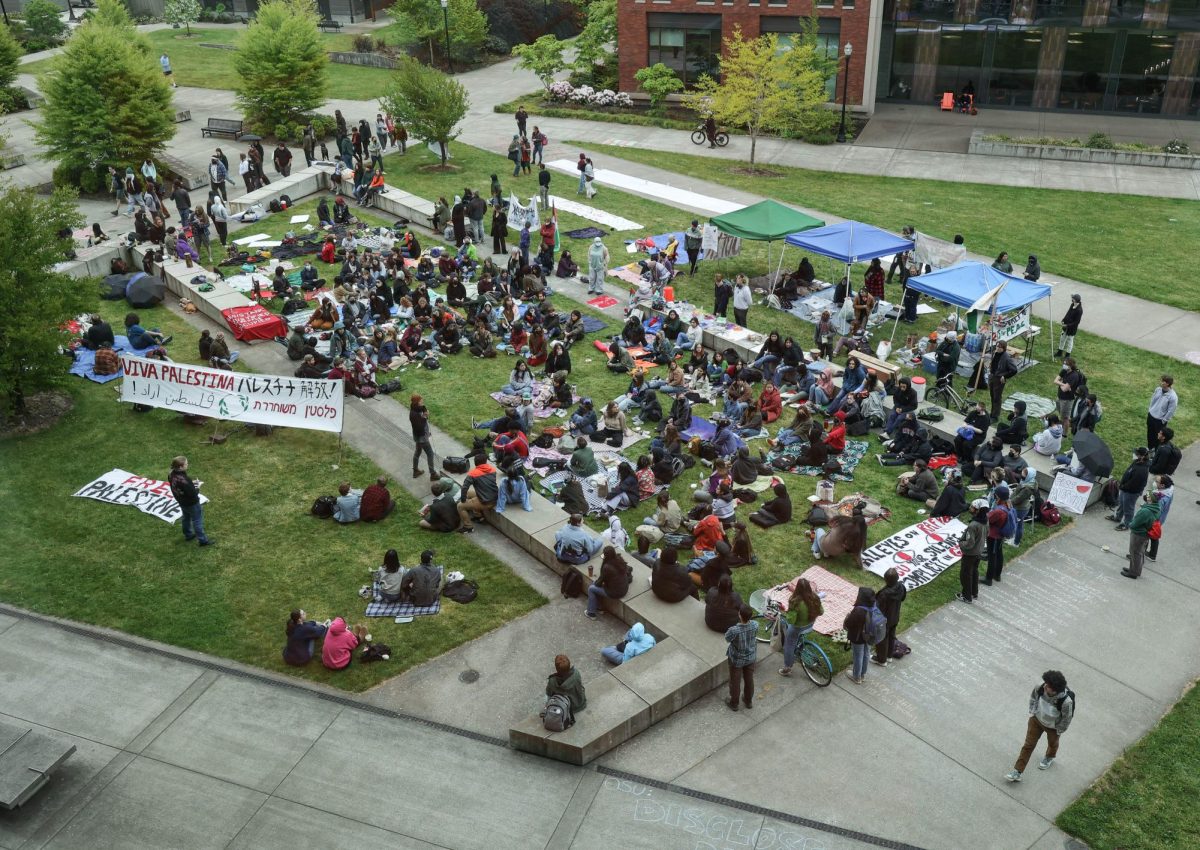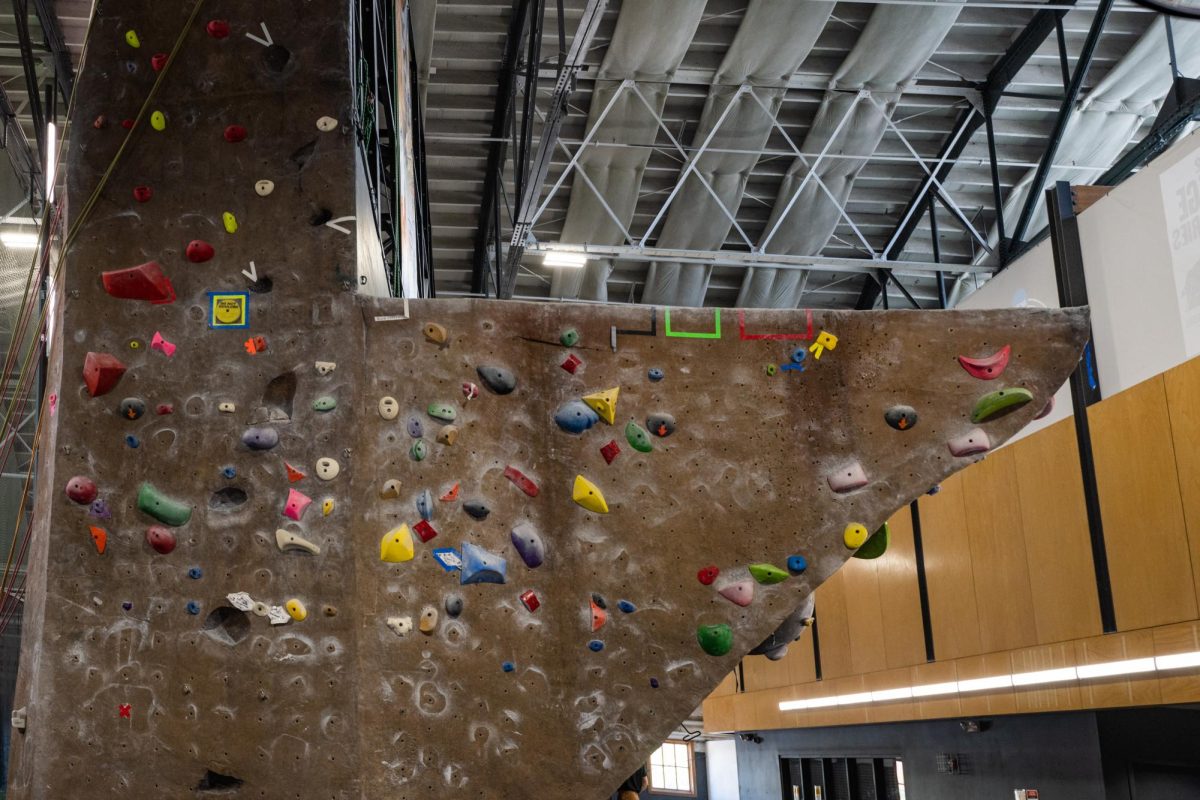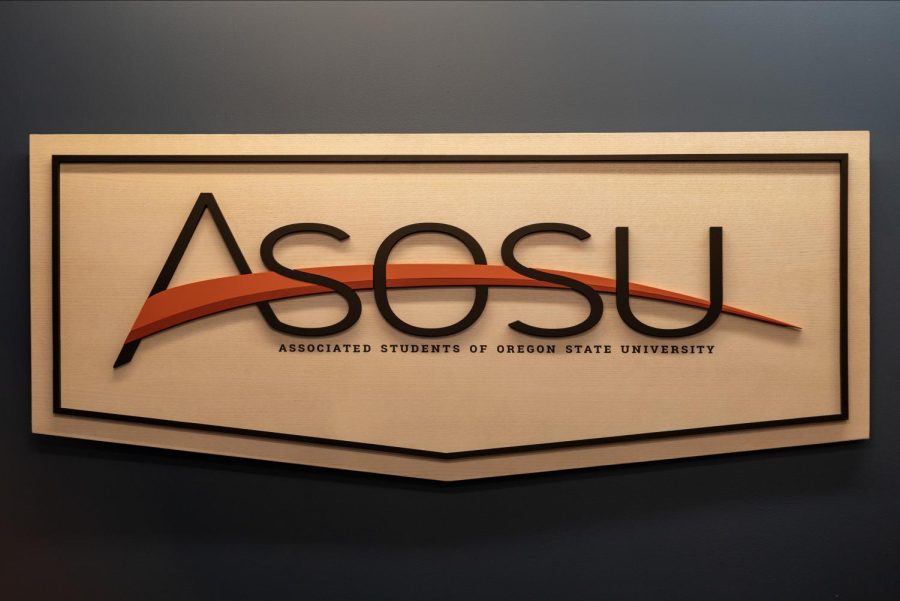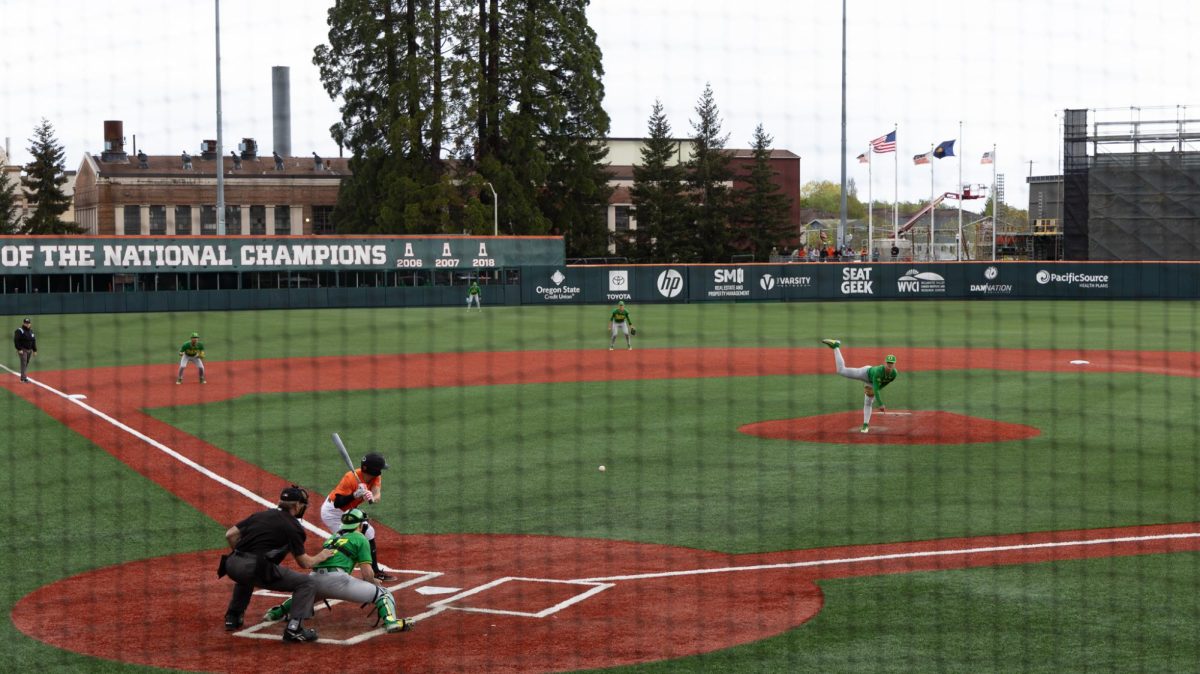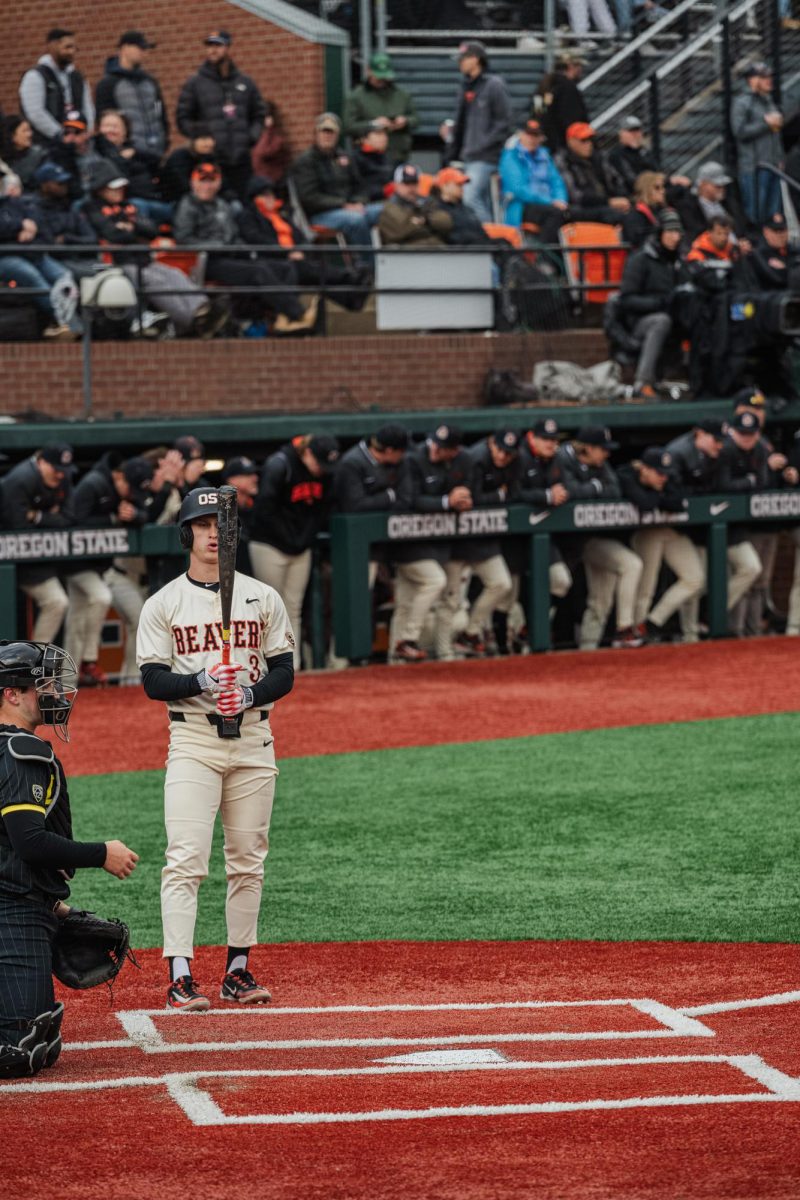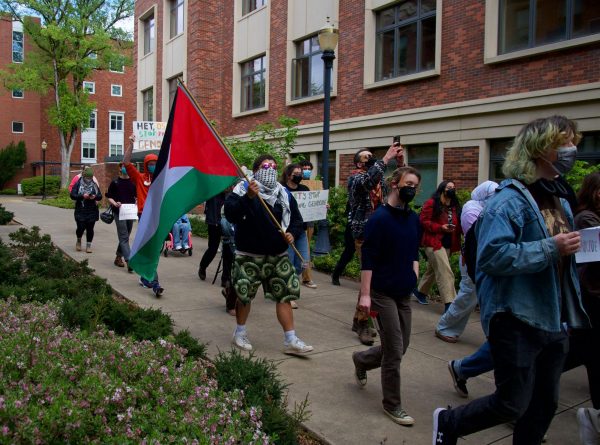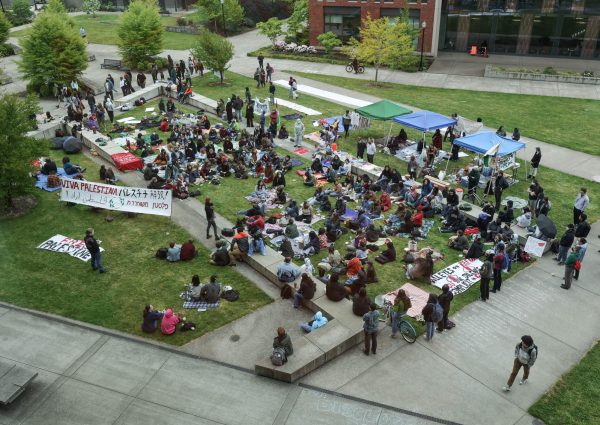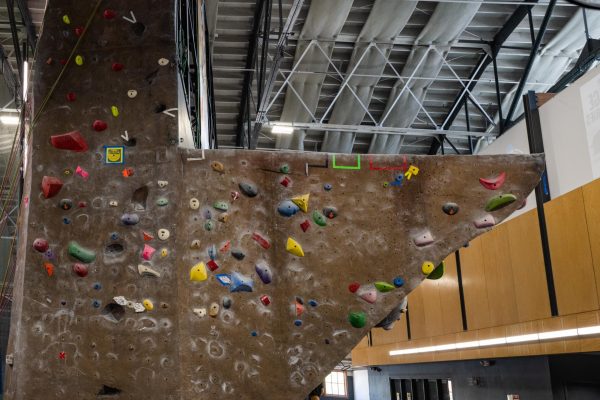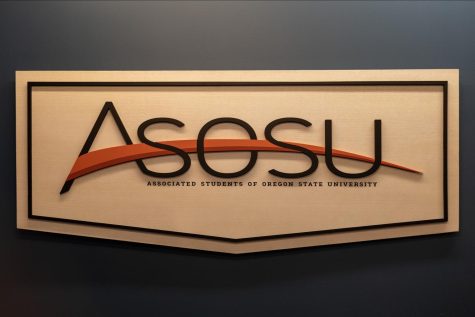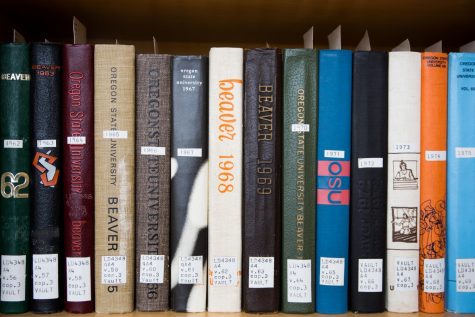Indigenous Studies minor to start at OSU as three Indigenous faculty members are given tenure track
David Lewis, an assistant professor of anthropology and ethnic studies in the School of Language, Culture, & Society, in his office in Waldo Hall on May 6. Lewis is one of the professors spearheading the new Indigenous studies minor, which will allow OSU students to learn more about Indigenous culture, history, art and more.
May 12, 2022
Luhui Whitebear, assistant professor in the School of Language, Culture and Society, is one of three faculty hired for tenure track, which has helped launch an Indigenous Studies minor at Oregon State University.
Beginning in the 2022-2023 academic year, SLCS will offer an Indigenous Studies minor in the College of Liberal Arts for students on OSU’s Corvallis Ore. campus and online to add to their degree.
“The minor has been introduced at a time when there is the right combination of courses and faculty available to engage in developing the curriculum and programming as well as teach the courses necessary for the Indigenous Studies minor to grow and thrive,” said Patricia Fifita, assistant professor of ethnic studies and recent tenure track recipient.
Fifita, in addition to Whitebear and associate professor David Lewis, are among the main faculty heading the formulation of the Indigenous Studies minor that will focus on Indigenous people’s relationships to knowledge systems, political systems, settler colonialism and geographies, mostly centered around those residing in the Americas and Pacific Islands, according to Fifita.
According to Lewis, the minor gives the professors space to dive deeper into topics they are interested in or offer introductory level courses on currently existing courses.
“I think we are going to see a lot more students interested in studying Indigenous people, their cultures, their ways of doing things, their culture, their philosophies, their art, their literature,” Lewis said. “We will see a lot more people taking our classes and perhaps that will result in a larger focus on Indigenous Studies and will produce people who will take what we are doing further.”
Lewis also said the minor is expected to be around 30 credits, typical of any other minor at OSU.
The majority of courses included in the minor will come from currently offered Ethnic Studies, anthropology, or women, gender, and sexuality studies programs, making the minor take an interdisciplinary approach to teaching Indigenous culture, Whitebear said.
“I believe it elevates programming and diversifies course availability within the SLCS and aligns with broader efforts outside of the university to prioritize Indigenous Studies programming within academia,” Fifita said.
According to Fifita, the minor also aligns with the social responsibility OSU holds as a land-grant institution. According to the Association for Public Land-Grant Universities, land-grant institutions such as OSU have been designated by state legislature or Congress to benefit from the Morrill Acts of 1862, 1890 and 1994. These institutions aimed to teach agriculture, military tactics and the mechanic arts, in addition to classical studies, so people could achieve a higher education at a lower cost.
Additionally, OSU’s mission as Oregon’s only land-grant university, according to its website, is to promote the radical ideas of public education, scientific research and engagement with the public.
The collective of Indigenous faculty will provide a diverse set of teachings within the minor according to the foundational documents drafted for the minor.
Lewis also thanks Susan Bernardin, director of SLCS, for advocating within administration for the minor’s importance in the school leading up to now.
The appointments of Fifita, Whitebear and Lewis each represent a first for OSU’s tenure track faculty. Fifita is the first Tongan tenure faculty, Lewis is the first Kalapuyan tenure faculty, and Whitebear is the first Chumash and cultural center director to hold tenure faculty—Whitebear is director of the Kaku-Ixt Mana Ina Haws cultural center.
Whitebear is also hopeful for expansion of the program into a major some day as the number of faculty able to support it grows.
“Indigenous Studies at OSU is important to me because it helps center Indigenous knowledge, course content and expertise on campus,” Whitebear said. “It also helps students see themselves reflected in the faculty and in programs offered on campus.”


